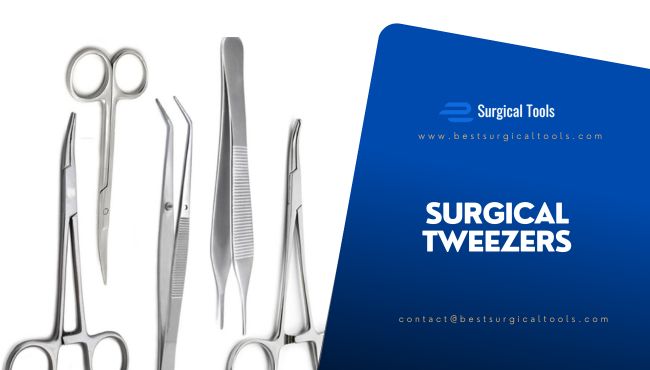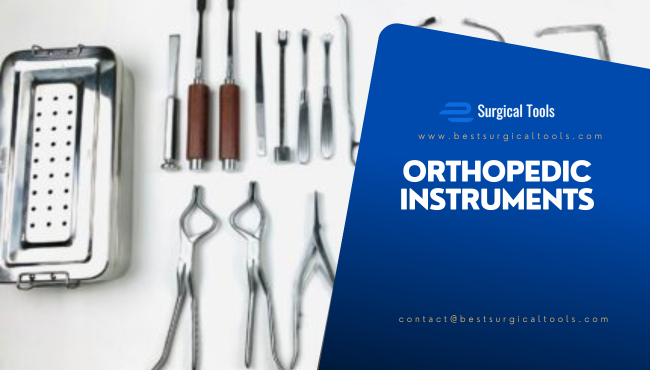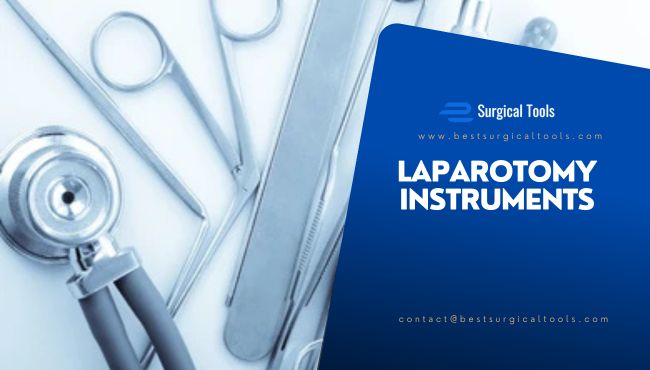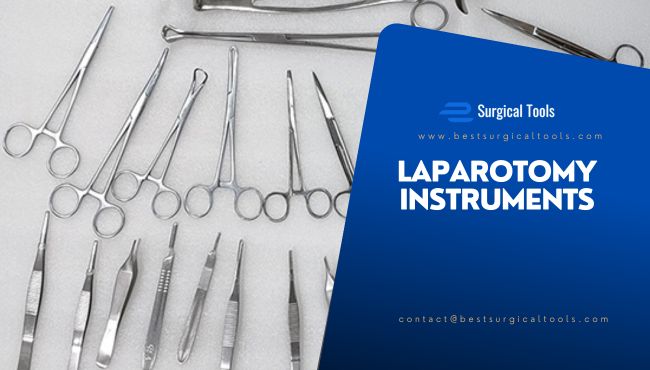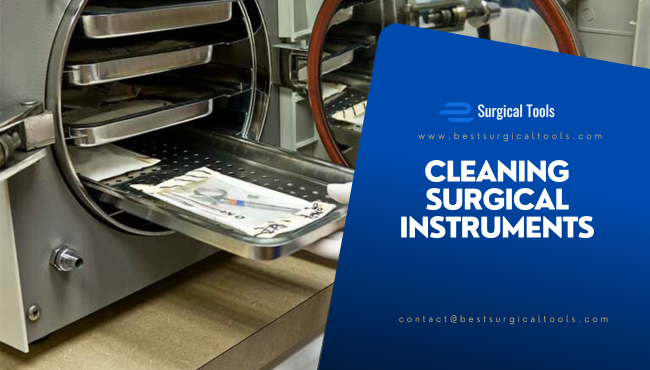
The True Cost of Surgical Instruments – What Hospitals & Clinics Must Know
If you’re in charge of buying surgical instruments for a hospital or clinic, you’ve probably felt the pinch lately—and it’s not just your imagination. Prices are climbing, stock’s harder to pin down, and snagging top-notch tools without breaking the bank feels like chasing a ghost. A scalpel that used to set you back $3 now costs $5. A premium surgical set that was $5,000? It’s creeping up to $7,000. What’s going on here? And more importantly, how do you keep these costs in check while still delivering the best for your patients?
You’re not alone in this frustration—supply chains are wobbly, regulations are tightening, and demand’s through the roof. But here’s the good news: You can take control. This guide peels back the curtain on the hidden costs of surgical instruments, shares insider tricks to slash expenses, and makes sure you’re not overpaying for the tools that keep your operating rooms humming. Let’s dive in and tackle this, step by step.

1. The Rising Cost of Medical-Grade Materials
Why Are Prices Going Up?
Surgical instruments aren’t your average kitchen knives—they’re built from high-grade stainless steel, titanium, and fancy coatings that laugh in the face of sterilization, corrosion, and years of hard use. But getting those materials isn’t as easy as it used to be. Here’s what’s driving the spike:
Supply Chain Chaos: Global disruptions—think shipping delays or factory shutdowns—mean less steel and titanium to go around.
Tougher Rules: New regs on medical-grade steel bump up production costs—more testing, more hoops.
Demand Surge: Everyone’s after the same stuff, from hospitals to device makers, pushing prices higher.
Picture this: A clinic budgets for scalpels at $3 each based on last year’s deal. Then a steel shortage hits, and the supplier’s quoting $5. Multiply that across hundreds of tools, and your budget’s crying uncle.
How to Stay Ahead of Price Surges
Don’t let material costs catch you off guard—here’s how to fight back:
Lock in Bulk Pricing: Sign those contracts early—before the next hike hits. A locked rate can save you thousands.
Shop Around: Work with multiple suppliers and compare their real-time quotes. One might still have $3 scalpels while another’s at $5.
Go Long-Term: Invest in reusable instruments that last. Fewer orders mean fewer chances to get stung by price jumps.
One purchasing manager I know locked in a year’s worth of titanium tools early—saved 15% when prices spiked mid-2025. Smart move.
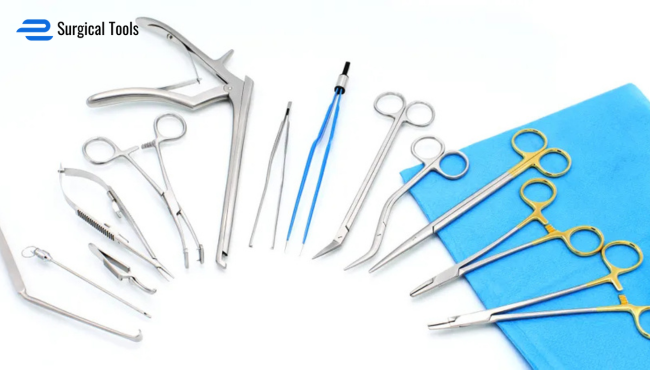
2. FDA & CE Regulations Are Increasing Prices
Why Compliance Costs More
Making surgical instruments isn’t just about forging steel—it’s about jumping through regulatory hoops. FDA and CE standards demand rigorous testing, fancy sterilization setups, and packaging that keeps everything pristine. That’s all great for safety, but it’s murder on your wallet:
Testing Fees: Every batch needs a green light, and that ain’t cheap.
New Rules: Stricter sterilization and packaging requirements pile on production costs.
Fewer Players: Small suppliers can’t keep up, leaving bigger ones to charge what they want.
A hospital I heard about budgeted $5,000 for a surgical set—then new CE rules kicked in, and the same set hit $7,000. Ouch.
How to Keep Costs Low Without Compromising Compliance
You don’t have to sacrifice safety to save cash—try this:
Certified Deals: Stick to FDA- and CE-approved suppliers who still compete on price. Not all compliance comes with a premium tag.
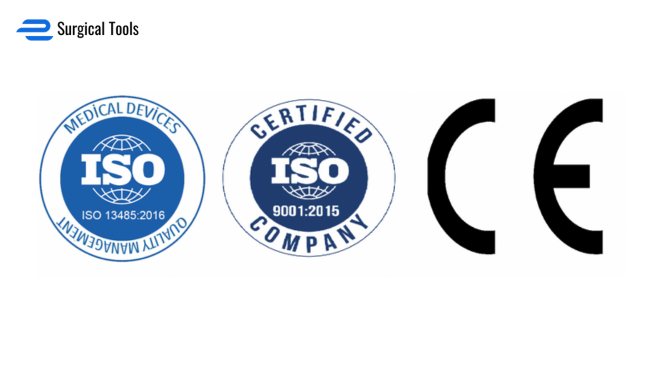
Reusable Wins: Grab reusable tools that meet regs—they’re pricier upfront but save over time.
Negotiate Hard: Build a relationship with long-term suppliers and haggle—loyalty can dodge those sudden hikes.
3. Single-Use vs. Reusable Surgical Instruments – Which Saves More?
The Big Debate
For ages, single-use tools have been the go-to—toss ‘em after one go, no infection risk, done. But with prices climbing, is that still the smart play? A $5 single-use scalpel sounds fine—until you’re buying thousands. Compare that to a $50 reusable one that lasts years, and the math gets interesting.
How to Save Money Without Compromising Safety
You can cut costs and keep patients safe—here’s how:
Reusable for the Win: Switch to high-quality reusables for non-critical stuff like basic suturing. That $50 scalpel pays off fast.
Sterilization Upgrade: Beef up your cleaning protocols—better autoclaves or training can stretch tool life.
Staff Smarts: Teach your team to handle instruments right—no dings or drops mean fewer replacements.
A clinic I know swapped to reusables for minor procedures—cut their tool budget by 30% in a year. It’s not reckless—it’s strategic.
4. Cheap Instruments Can Cost You More in the Long Run
The False Economy Trap
It’s tempting to grab the budget option—why pay $7,000 for a surgical set when there’s a $4,000 knockoff? But here’s the rub: Cheap tools wear out fast, break mid-procedure, or fail sterilization checks. Suddenly, you’re replacing them—or worse, dealing with a patient complication.
How to Buy High-Quality Instruments Without Overpaying
Don’t get burned by the bargain bin—here’s the fix:
Warranty Matters: Pick tools with manufacturer guarantees—free fixes or replacements save cash.
Steel Check: Make sure it’s legit medical-grade (ISO 13485-certified)—no shortcuts.
Do Your Homework: Read reviews from other hospitals. If they’re happy with a supplier, you’ll be too.
A surgeon friend once cheaped out on scissors—snapped during surgery. Cost him a $500 replacement and a tense moment. Lesson learned.

5. Supply Chain Disruptions Are Increasing Costs – How to Stay Ahead
Why Delays Hurt Your Wallet
Supply chains in 2025 are a rollercoaster—delays mean emergency shipments at sky-high prices, weeks waiting for critical tools, and shortages forcing you to pay whatever’s asked. That $5,000 surgical set? A stock-out could push it to $7,000 if you’re desperate.
How to Avoid Paying More Due to Supply Chain Issues
Beat the chaos with these moves:
Plan Ahead: Order months early—emergency buys are profit killers.
Multiple Lifelines: Keep ties with several suppliers—one’s out, another’s got you covered.
Lock It Down: Negotiate long-term deals for steady pricing and guaranteed stock.
One hospital I heard about dodged a $10,000 rush order by planning six months out. Patience pays.
How to Cut Surgical Instrument Costs Without Sacrificing Quality
Surgical instruments are the backbone of every procedure—but overpaying? That’s optional. Here’s your 2025 playbook to keep costs down and quality up:
Lock in Bulk Pricing: Nail down rates before they climb—every dollar counts.
Shop Around: Compare suppliers—don’t settle for the first quote.
Switch to Reusables: Where it’s safe, go reusable—less waste, more savings.
Invest in Durability: High-quality tools outlast the cheap stuff—spend once, not twice.
Plan Smart: Order ahead—no more panic purchases at premium prices.
A Real-World Win
I talked to a clinic manager who slashed their instrument budget by 25%. How? They locked in bulk deals, switched half their tools to reusables, and built a supplier network that kept prices steady. “It’s not rocket science,” she said, “just paying attention.”

Surgical tools don’t have to be a money pit. The smartest hospitals and clinics are already trimming the fat without skimping on care—and now you’ve got the roadmap to join them. Stop overpaying and start outsmarting the costs in 2025.
Frequently Asked Questions
Why Is the Cost of Surgical Instruments Going Up Every Year?
Answer: Ugh, it’s frustrating, right? That $3 scalpel turning into $5? Blame supply chain hiccups, tougher steel regs, and everyone wanting the same stuff. Materials like titanium are harder to snag, and 2025’s demand is nuts. Lock in bulk deals early and shop around—don’t let those surges catch you off guard.
How Can I Keep the Cost of Surgical Instruments From Breaking My Budget?
Answer: I feel you—watching a $5,000 set hit $7,000 stings. Start by locking in prices with suppliers before they hike. Compare quotes from a few sources, and switch to reusables where it’s safe. One clinic I know saved 25% doing this—it’s about outsmarting the costs, not just paying them.
Are Reusable Surgical Instruments Really Cheaper Than Single-Use Ones?
Answer: Good question! A $5 single-use scalpel sounds easy, but buy a thousand, and it adds up. A $50 reusable one might last years if you treat it right. Upgrade your sterilization game and train your team—non-critical procedures are perfect for reusables. It’s a long-term win.
What’s the Deal With FDA and CE Rules Jacking Up Prices?
Answer: Oh man, those regs are a pain! Testing, fancy packaging, stricter standards—they all pile on costs. That $5,000 set hitting $7,000? Partly compliance. Stick to certified suppliers who don’t overcharge, negotiate with long-term partners, and grab reusables that meet the rules without breaking the bank.
How Do I Avoid Overpaying for Cheap Surgical Instruments That Don’t Last?
Answer: Been burned by the bargain bin? A $4,000 set sounds great until it snaps mid-surgery—like that surgeon’s scissors nightmare. Go for tools with warranties, check they’re ISO 13485-certified, and peek at hospital reviews. Spend a bit more upfront, and you won’t be replacing junk later.
How Can Supply Chain Issues Affect the Cost of Surgical Instruments?
Answer: Supply chains in 2025 are a mess—delays mean emergency orders, and shortages push that $5,000 set to $7,000. Plan months ahead, keep multiple suppliers in your back pocket, and lock in contracts. One hospital dodged a $10,000 rush fee by ordering early—patience pays off.
What’s the Smartest Way to Buy Surgical Instruments Without Getting Ripped Off?
Answer: Nobody wants to overpay, right? Compare suppliers—don’t just stick with one. Lock in bulk pricing, grab reusables with warranties, and read up on who other hospitals trust. It’s like shopping for a car—do your homework, and you’ll drive away with a deal.
Can I Cut the Cost of Surgical Instruments Without Hurting Patient Care?
Answer: Totally doable! Switch to reusables for basic stuff, beef up sterilization to make tools last, and lock in prices early. Quality doesn’t have to suffer—one clinic I heard about cut costs 30% and still kept patients safe. It’s about strategy, not shortcuts.
How Do I Know If I’m Paying Too Much for Surgical Instruments?
Answer: Feel like you’re getting gouged? If that $5 scalpel’s way above last year’s $3, check supplier quotes—multiple ones. Look at market trends (steel’s wild lately), and see if reusables make sense. If it smells like a rip-off, it probably is—shop smarter.
What Can I Do If My Supplier Suddenly Raises Prices Mid-Order?
Answer: Oh, that’s the worst—like that $5,000 set jumping to $7,000. If you’ve got a contract, hold them to it—locked prices are gold. No contract? Lean on backup suppliers or negotiate hard with your main one. Build those relationships now, and they’ll cut you slack later.

